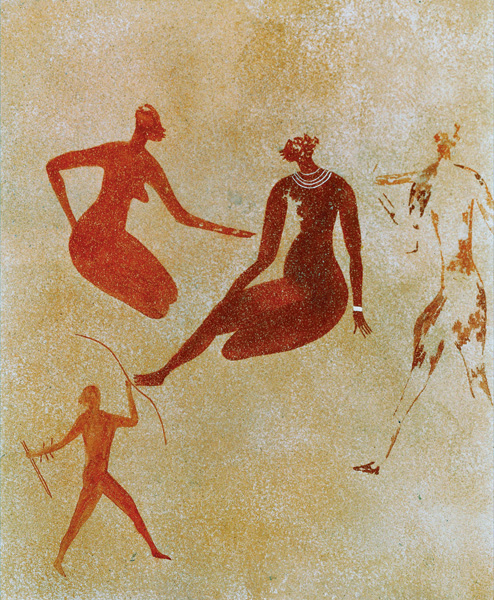
This remarkably naturalistic ancient cave painting of lounging women—more Matisse than Lascaux—is just a small portion of the thousands of works of cave and rock art at Tassili N’Ajjer, a UNESCO World Heritage site located on a high plateau deep in the Algerian Sahara. The Sahara was not always the desert it now is: In prehistoric times, Tassili N’Ajjer teemed with life. It supported abundant game, including large herd animals, that in turn nourished a vibrant human civilization.

Discovered in 1933, the art at Tassili N’Ajjer goes back at least as far as the fourth millennium B.C. and can be divided into four distinct stylistic periods, each reflecting changes in the region’s animal life as the climate became successively drier. In the final, or “Cameline,” period, which extended into the first centuries of Algeria’s Christian era, camels make their appearance—an indication that the region had definitively become a desert. The women shown here are thought to have been painted in 2000 B.C.; nothing is known about the people who inhabited the plateau at that time. They may be the ancestors of the Ajjer Tuareg tribes that tend their meager flocks there today.
Already a library member? Log in here.
Institution user? Log in with your IP address.

